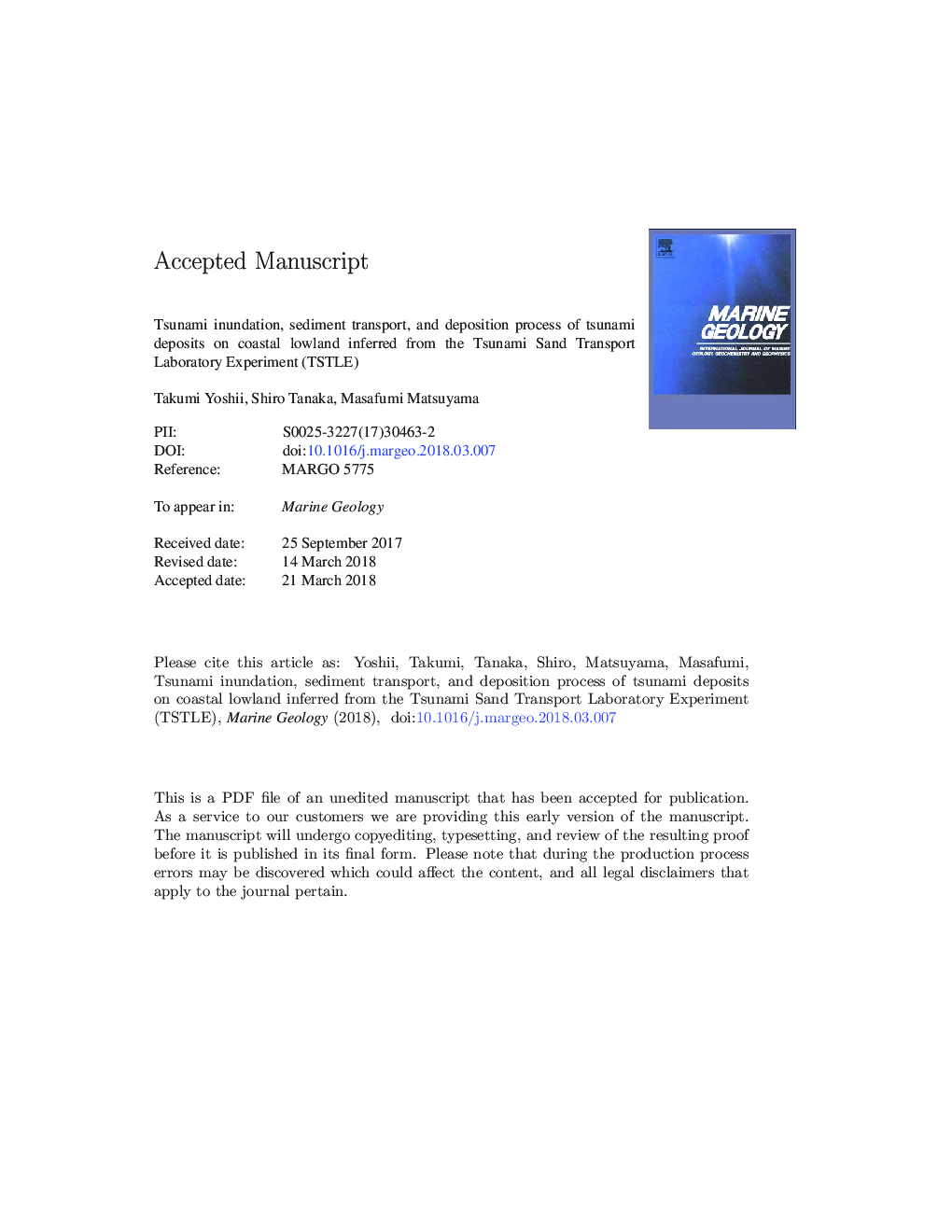| کد مقاله | کد نشریه | سال انتشار | مقاله انگلیسی | نسخه تمام متن |
|---|---|---|---|---|
| 8911979 | 1639052 | 2018 | 53 صفحه PDF | دانلود رایگان |
عنوان انگلیسی مقاله ISI
Tsunami inundation, sediment transport, and deposition process of tsunami deposits on coastal lowland inferred from the Tsunami Sand Transport Laboratory Experiment (TSTLE)
دانلود مقاله + سفارش ترجمه
دانلود مقاله ISI انگلیسی
رایگان برای ایرانیان
کلمات کلیدی
موضوعات مرتبط
مهندسی و علوم پایه
علوم زمین و سیارات
ژئوشیمی و پترولوژی
پیش نمایش صفحه اول مقاله

چکیده انگلیسی
The processes of tsunami inundation, sediment transport, and deposition on coastal lowlands are investigated experimentally. We conducted large-scale experiments with land slopes of 0.00 and 0.01 and compared them with experiments conducted previously with a slope of 0.02. The ratio of marine-originated sediment in the inland deposits decreased as the land slope decreased, reflecting the strong inundation flow and weak return flow. The sediment concentration near the bed increased remarkably and supplied a greater quantity of coarse sand inland when the land slope decreased, indicating the strong influence of land slope on bed load. The extent of sandy deposits and the inundation limit nearly corresponded with the sloping topographies. However, the inundation flow reached much farther inland than the sandy deposits on the flat (i.e., level) topography. This was because the extent of sandy deposits was determined by the flow speed, which depended in turn on the wave speed, whereas the inundation limit was determined by the inland water mass, which depended in turn on the waveform. The floating load reached the inundation limit and formed very thin and sparse muddy deposits. Considering the uncertainty of the waveform and the difficulty of detecting muddy deposits, it is more feasible to estimate the wave speed from the extent of sandy deposits. The spatial distributions of sandy deposits for various waves, land slopes, and topographies were characterized by the nondimensional area density and inundation distance. This result suggested the possibility of quantitative comparison among field investigations of tsunami deposits under various conditions. The formation of an inverse grading layer, experimentally observed in a wide range of inland deposits, was attributed to kinetic sieving. The bed load under slow deposition was speculated to thicken the inverse grading layer by reworking the coarse sand. Additionally, the sediment behind dunes became liquefied and showed shear deformation during the erosion. The shear deformation of liquefied sediment below the erosional surface might leave sedimentary characteristics specific to earthquake tsunamis.
ناشر
Database: Elsevier - ScienceDirect (ساینس دایرکت)
Journal: Marine Geology - Volume 400, 1 June 2018, Pages 107-118
Journal: Marine Geology - Volume 400, 1 June 2018, Pages 107-118
نویسندگان
Takumi Yoshii, Shiro Tanaka, Masafumi Matsuyama,